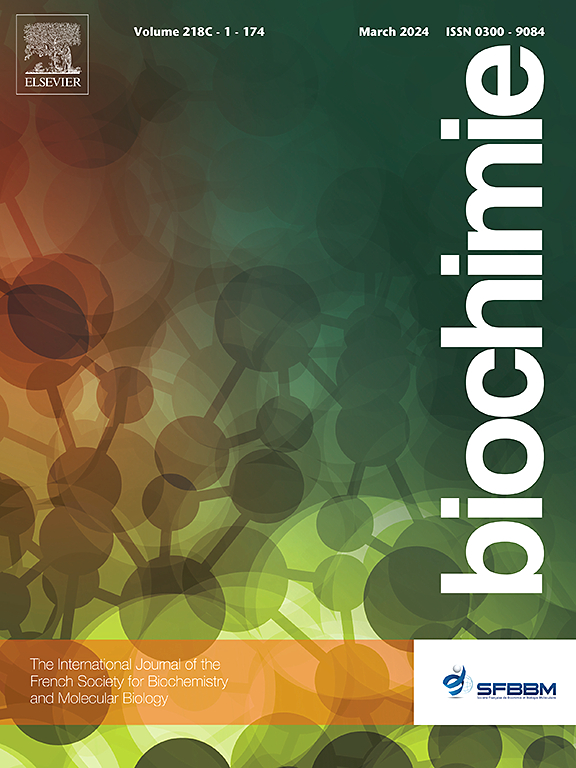Advanced profiling and structural analysis of anencephaly gangliosides by ion mobility tandem mass spectrometry
IF 3
3区 生物学
Q2 BIOCHEMISTRY & MOLECULAR BIOLOGY
引用次数: 0
Abstract
Anencephaly, the most severe type of neural tube defects (NTDs) in humans, occurs between the third and fourth gestational weeks (GW), involves the cranial part of the NT and results in the absence of the forebrain and skull. Exposed to amniotic fluid toxicity, neural tissue is degraded and prevented from development. Currently, little is known about the molecular bases of the disease and the possible involvement of glycans. In this context, considering the role played by gangliosides (GGs) in fetal brain development and the previous achievements of ion mobility separation (IMS) mass spectrometry (MS) in biomarker discovery, we report here on the introduction of this advanced analytical technique in NTD research, and its optimization for a comprehensive determination of anencephaly gangliosidome. Three native GG extracts from residual brains of anencephalic fetuses in 28, 35 and 37 GW were comparatively profiled by IMS MS, structurally analyzed by IMS MS/MS, and finally assessed against a native GG mixture from normal fetal brain. IMS MS provided data on 343 anencephaly gangliosides vs. only 157 known before and revealed for the first time the incidence of the entire penta-to octasialylated series. The comparative assay disclosed variations in GG expression with fetal age and a correlation of the pattern with the developmental stage. In contrast to the normal fetal brain, the neural tissue in anencephaly was found to contain an elevated number of polysialogangliosides and a lower expression of O-Ac- and GalNAc-modified glycoforms. These species worth further detailed investigation as new potential anencephaly markers.

离子迁移率串联质谱分析无脑儿神经节苷类的高级谱图和结构分析。
无脑畸形是人类神经管缺陷(NTDs)最严重的类型,发生在妊娠第3和第4周(GW)之间,涉及神经管的颅部,导致前脑和颅骨缺失。暴露在羊水毒性下,神经组织被降解并阻止发育。目前,对该疾病的分子基础和聚糖的可能参与知之甚少。在此背景下,考虑到神经节苷脂(GGs)在胎儿大脑发育中的作用,以及离子迁移分离(IMS)质谱(MS)在生物标志物发现中的先前成就,我们在此报道这种先进的分析技术在NTD研究中的引入,并对其进行优化,以全面测定无脑儿神经节苷脂体。采用IMS MS对28、35和37 GW无脑胎儿残脑的三种天然GG提取物进行比较分析,并采用IMS MS/MS对其结构进行分析,最后与正常胎儿脑的天然GG混合物进行比较。IMS MS提供了343种无脑神经节苷脂的数据,而之前已知的只有157种,并首次揭示了整个五到八次化系列的发病率。比较分析揭示了GG表达随胎龄的变化以及与发育阶段的相关模式。与正常胎儿大脑相比,无脑畸形的神经组织中含有较多的多涎神经节苷类,O-Ac和galnac修饰的糖型表达较低。这些物种作为潜在的无脑畸形标记物值得进一步深入研究。
本文章由计算机程序翻译,如有差异,请以英文原文为准。
求助全文
约1分钟内获得全文
求助全文
来源期刊

Biochimie
生物-生化与分子生物学
CiteScore
7.20
自引率
2.60%
发文量
219
审稿时长
40 days
期刊介绍:
Biochimie publishes original research articles, short communications, review articles, graphical reviews, mini-reviews, and hypotheses in the broad areas of biology, including biochemistry, enzymology, molecular and cell biology, metabolic regulation, genetics, immunology, microbiology, structural biology, genomics, proteomics, and molecular mechanisms of disease. Biochimie publishes exclusively in English.
Articles are subject to peer review, and must satisfy the requirements of originality, high scientific integrity and general interest to a broad range of readers. Submissions that are judged to be of sound scientific and technical quality but do not fully satisfy the requirements for publication in Biochimie may benefit from a transfer service to a more suitable journal within the same subject area.
 求助内容:
求助内容: 应助结果提醒方式:
应助结果提醒方式:


